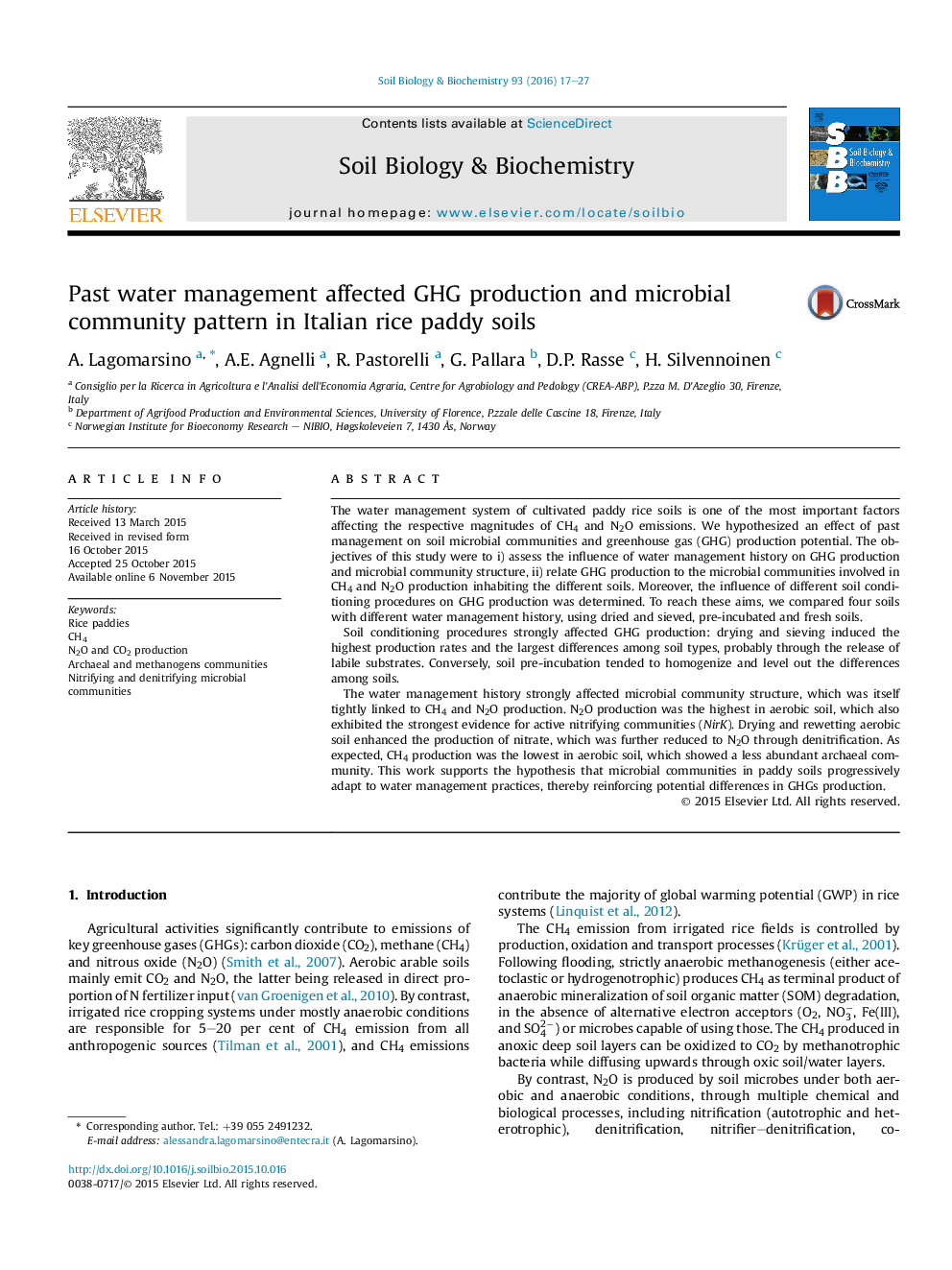| Article ID | Journal | Published Year | Pages | File Type |
|---|---|---|---|---|
| 2024241 | Soil Biology and Biochemistry | 2016 | 11 Pages |
•Soil conditioning and past water management influenced GHG production.•The specific microbial pattern of each soil was linked to CH4 or N2O production.•Soil methanogens and CH4 production were less abundant in aerobic than flooded soils.•Archaeal community was involved in GHGs production.•Nitrification in aerobic soil triggered N2O peaks.
The water management system of cultivated paddy rice soils is one of the most important factors affecting the respective magnitudes of CH4 and N2O emissions. We hypothesized an effect of past management on soil microbial communities and greenhouse gas (GHG) production potential. The objectives of this study were to i) assess the influence of water management history on GHG production and microbial community structure, ii) relate GHG production to the microbial communities involved in CH4 and N2O production inhabiting the different soils. Moreover, the influence of different soil conditioning procedures on GHG production was determined. To reach these aims, we compared four soils with different water management history, using dried and sieved, pre-incubated and fresh soils.Soil conditioning procedures strongly affected GHG production: drying and sieving induced the highest production rates and the largest differences among soil types, probably through the release of labile substrates. Conversely, soil pre-incubation tended to homogenize and level out the differences among soils.The water management history strongly affected microbial community structure, which was itself tightly linked to CH4 and N2O production. N2O production was the highest in aerobic soil, which also exhibited the strongest evidence for active nitrifying communities (NirK). Drying and rewetting aerobic soil enhanced the production of nitrate, which was further reduced to N2O through denitrification. As expected, CH4 production was the lowest in aerobic soil, which showed a less abundant archaeal community. This work supports the hypothesis that microbial communities in paddy soils progressively adapt to water management practices, thereby reinforcing potential differences in GHGs production.
